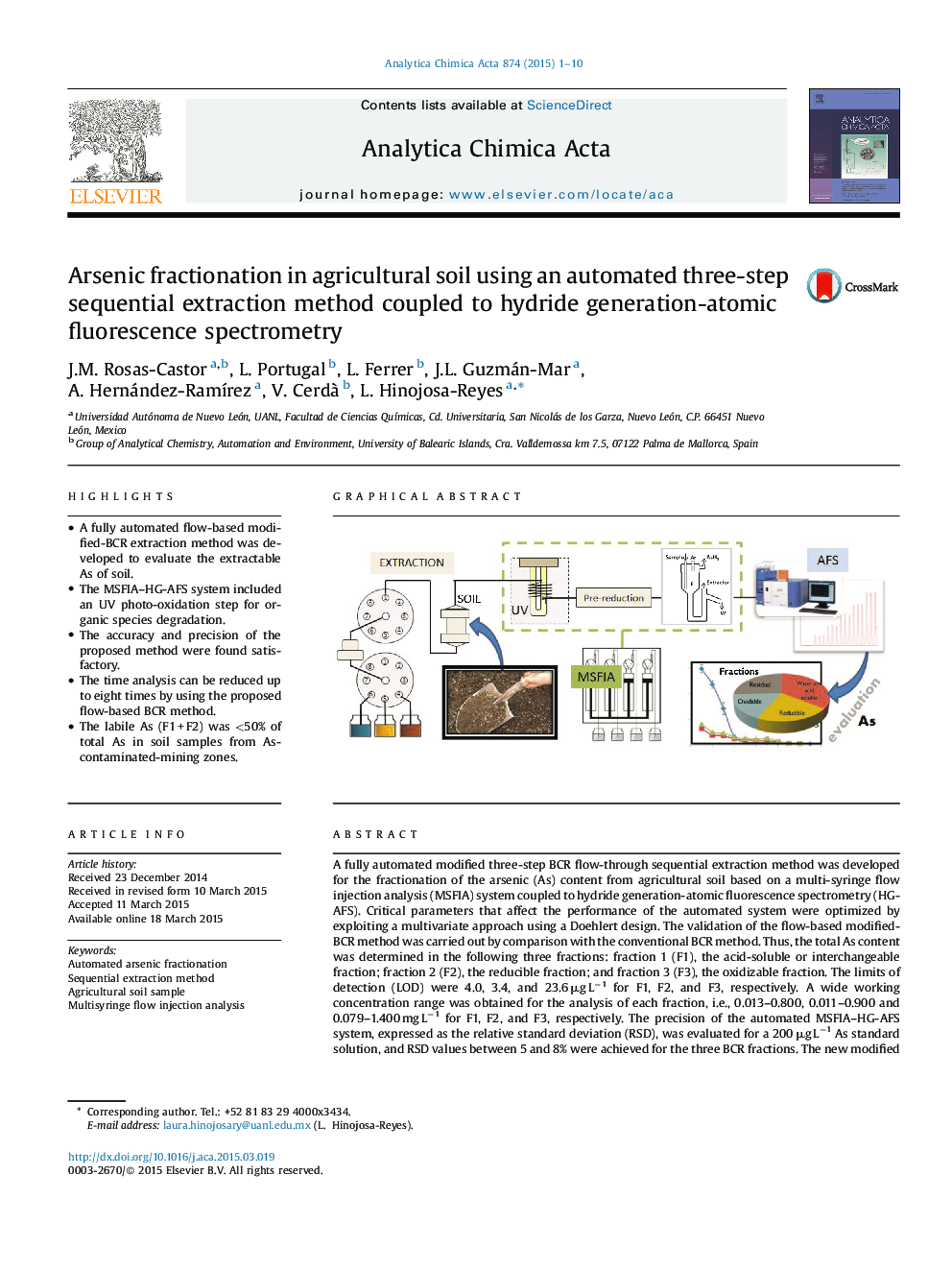| کد مقاله | کد نشریه | سال انتشار | مقاله انگلیسی | نسخه تمام متن |
|---|---|---|---|---|
| 1163345 | 1490958 | 2015 | 10 صفحه PDF | دانلود رایگان |
• A fully automated flow-based modified-BCR extraction method was developed to evaluate the extractable As of soil.
• The MSFIA–HG-AFS system included an UV photo-oxidation step for organic species degradation.
• The accuracy and precision of the proposed method were found satisfactory.
• The time analysis can be reduced up to eight times by using the proposed flow-based BCR method.
• The labile As (F1 + F2) was <50% of total As in soil samples from As-contaminated-mining zones.
A fully automated modified three-step BCR flow-through sequential extraction method was developed for the fractionation of the arsenic (As) content from agricultural soil based on a multi-syringe flow injection analysis (MSFIA) system coupled to hydride generation-atomic fluorescence spectrometry (HG-AFS). Critical parameters that affect the performance of the automated system were optimized by exploiting a multivariate approach using a Doehlert design. The validation of the flow-based modified-BCR method was carried out by comparison with the conventional BCR method. Thus, the total As content was determined in the following three fractions: fraction 1 (F1), the acid-soluble or interchangeable fraction; fraction 2 (F2), the reducible fraction; and fraction 3 (F3), the oxidizable fraction. The limits of detection (LOD) were 4.0, 3.4, and 23.6 μg L−1 for F1, F2, and F3, respectively. A wide working concentration range was obtained for the analysis of each fraction, i.e., 0.013–0.800, 0.011–0.900 and 0.079–1.400 mg L−1 for F1, F2, and F3, respectively. The precision of the automated MSFIA–HG-AFS system, expressed as the relative standard deviation (RSD), was evaluated for a 200 μg L−1 As standard solution, and RSD values between 5 and 8% were achieved for the three BCR fractions. The new modified three-step BCR flow-based sequential extraction method was satisfactorily applied for arsenic fractionation in real agricultural soil samples from an arsenic-contaminated mining zone to evaluate its extractability. The frequency of analysis of the proposed method was eight times higher than that of the conventional BCR method (6 vs 48 h), and the kinetics of lixiviation were established for each fraction.
Figure optionsDownload as PowerPoint slide
Journal: Analytica Chimica Acta - Volume 874, 18 May 2015, Pages 1–10
